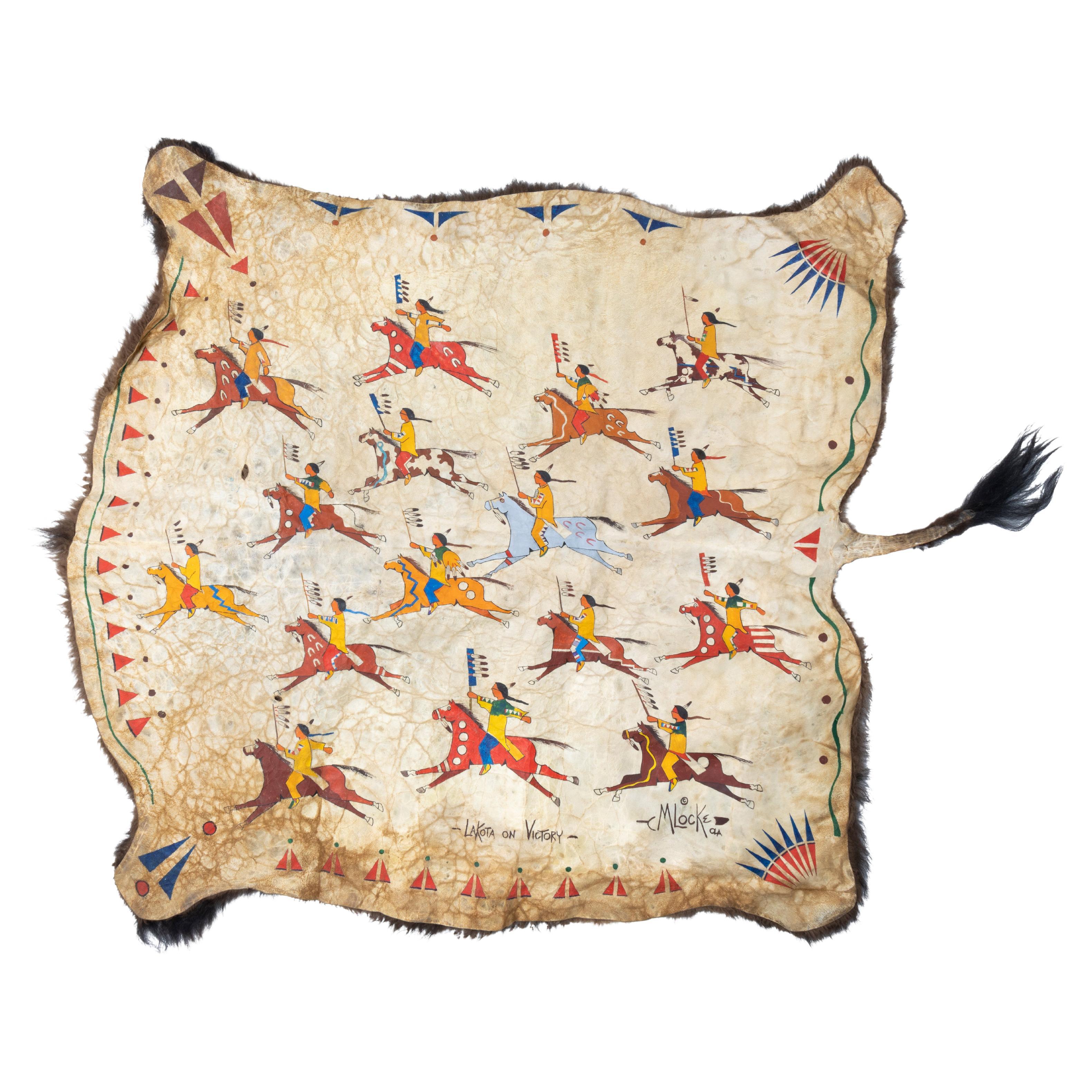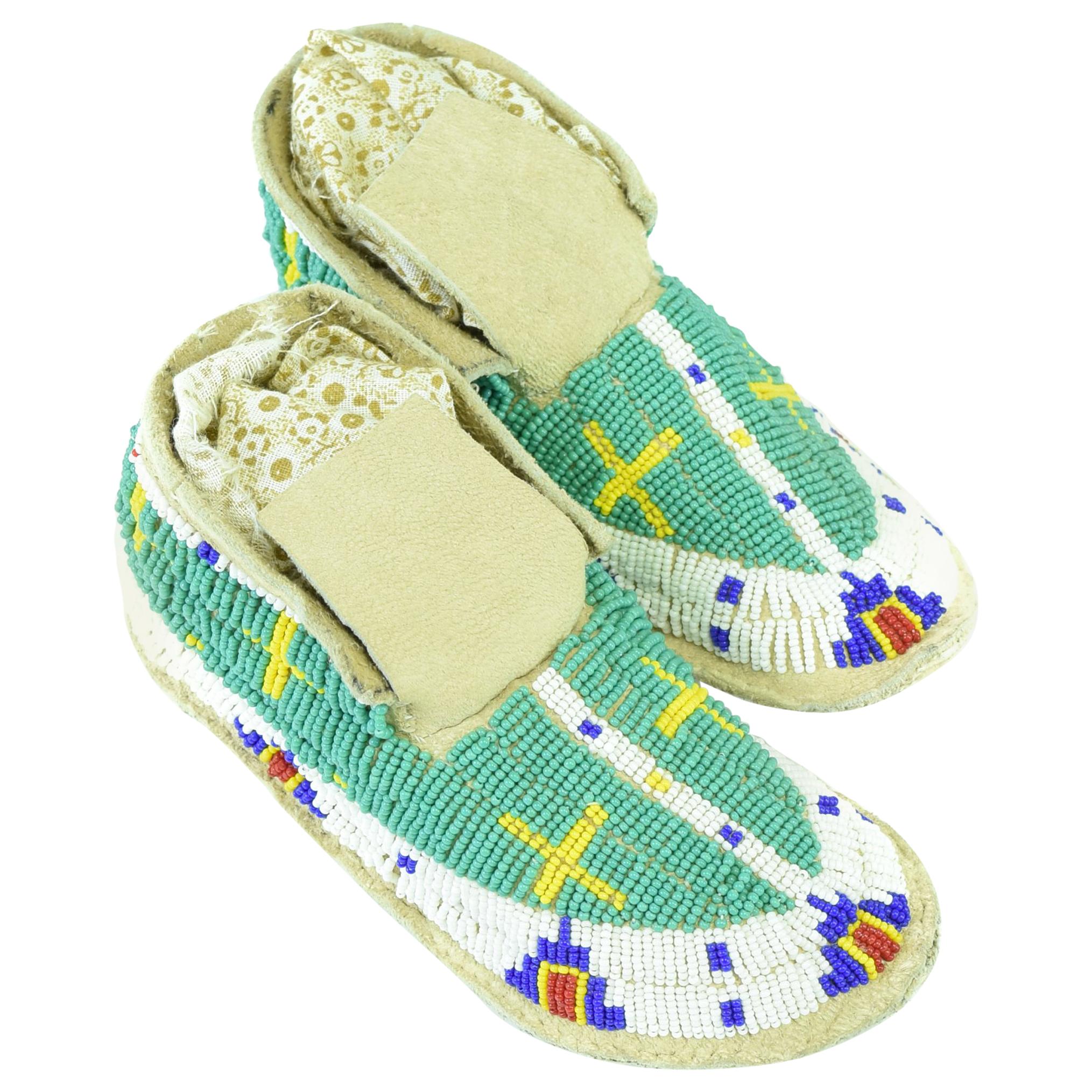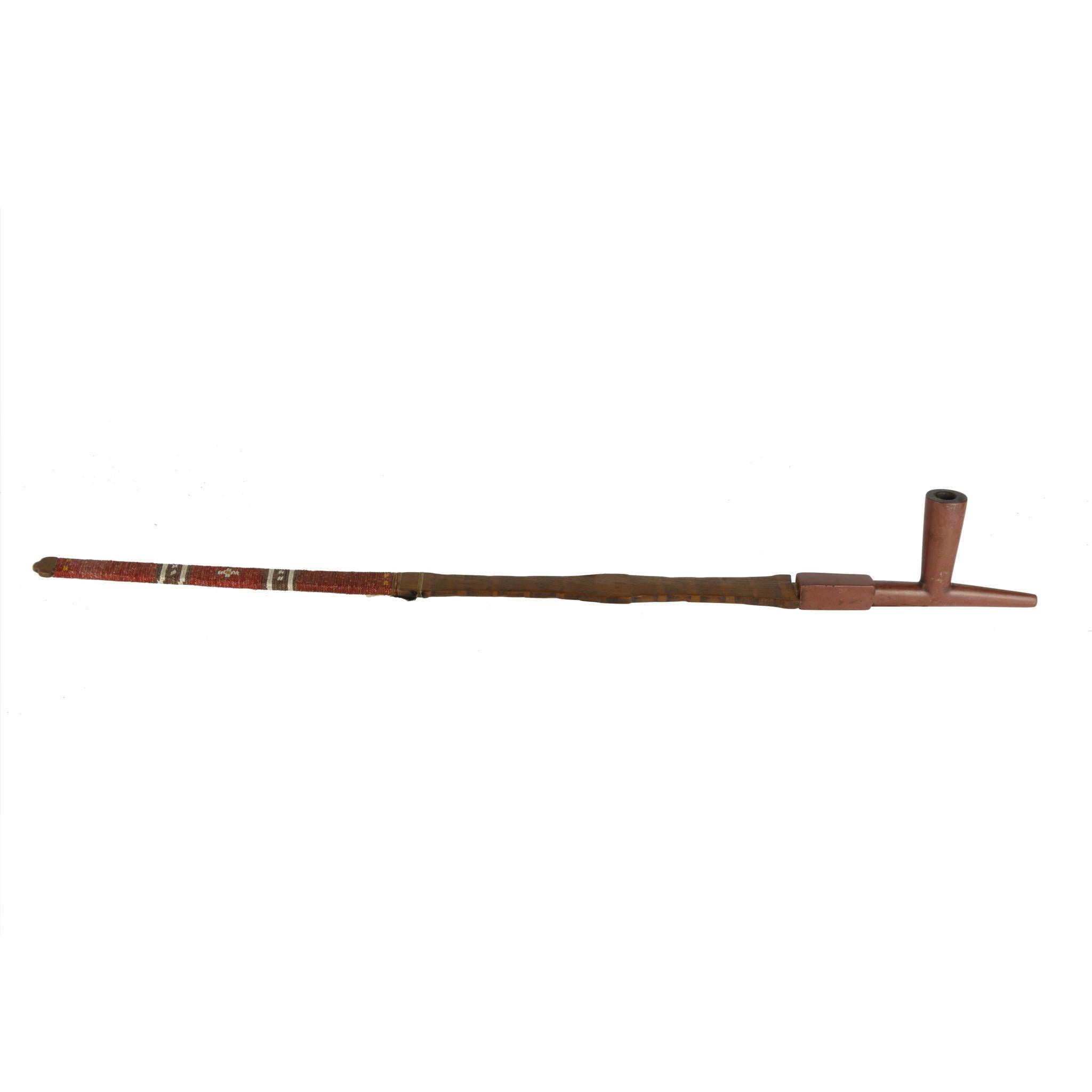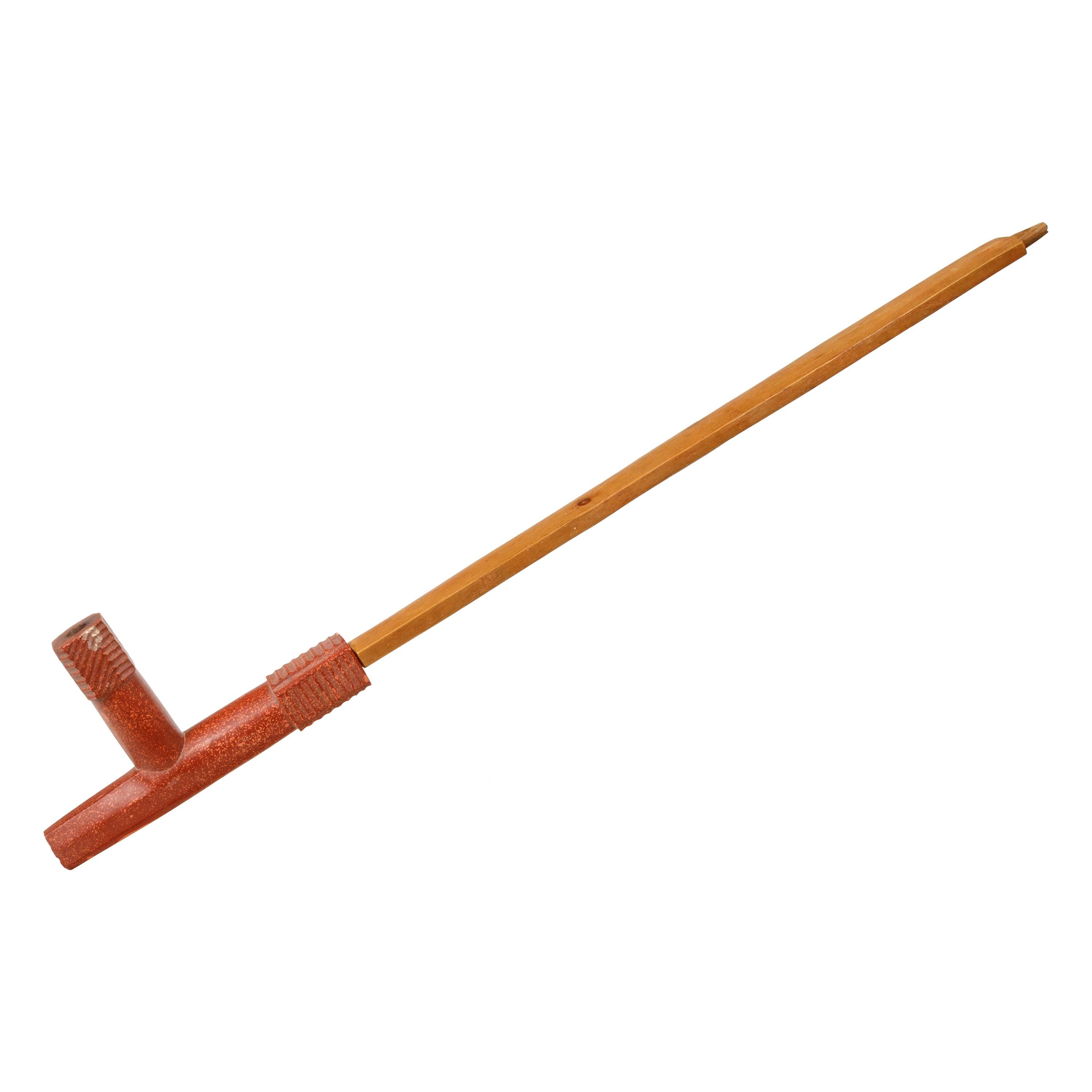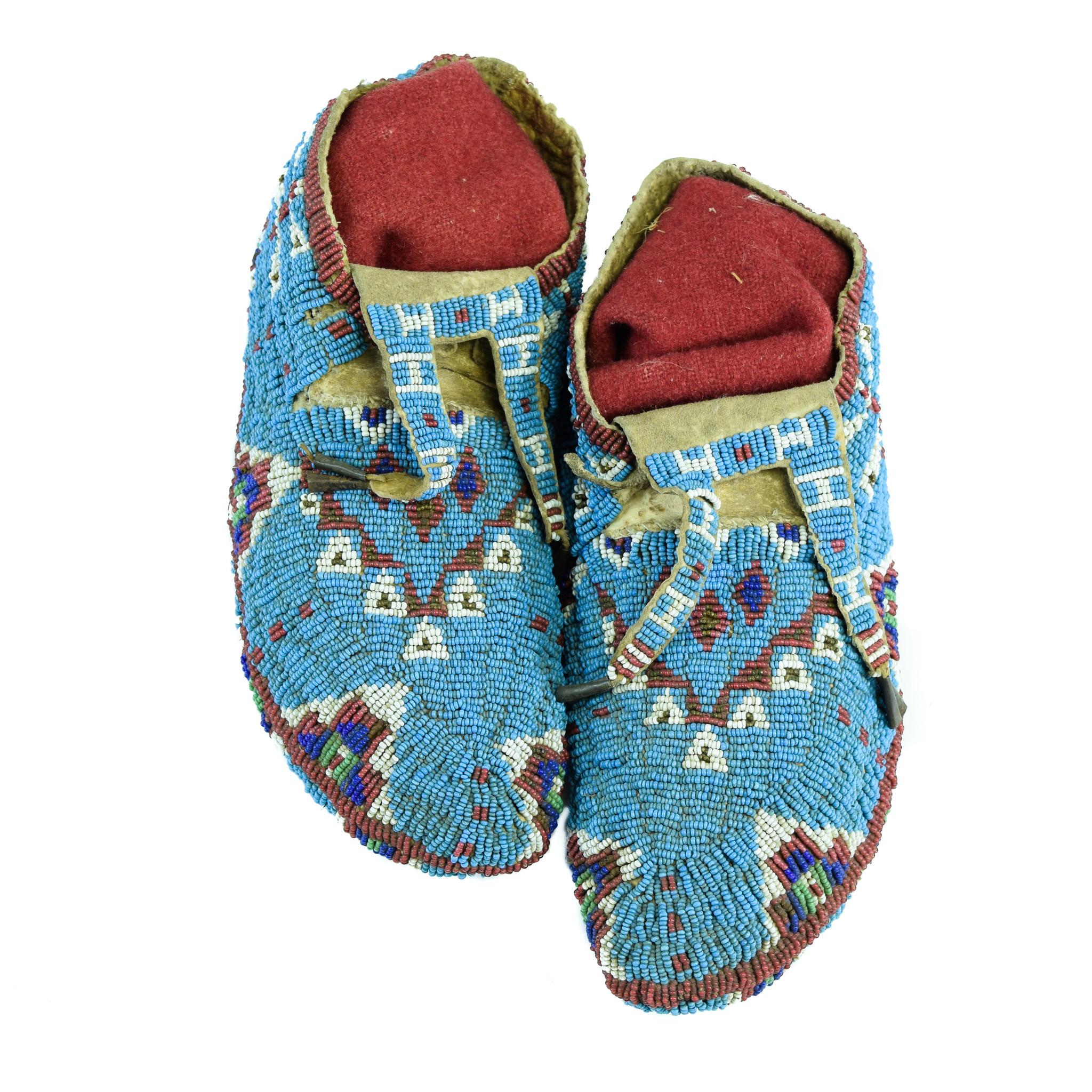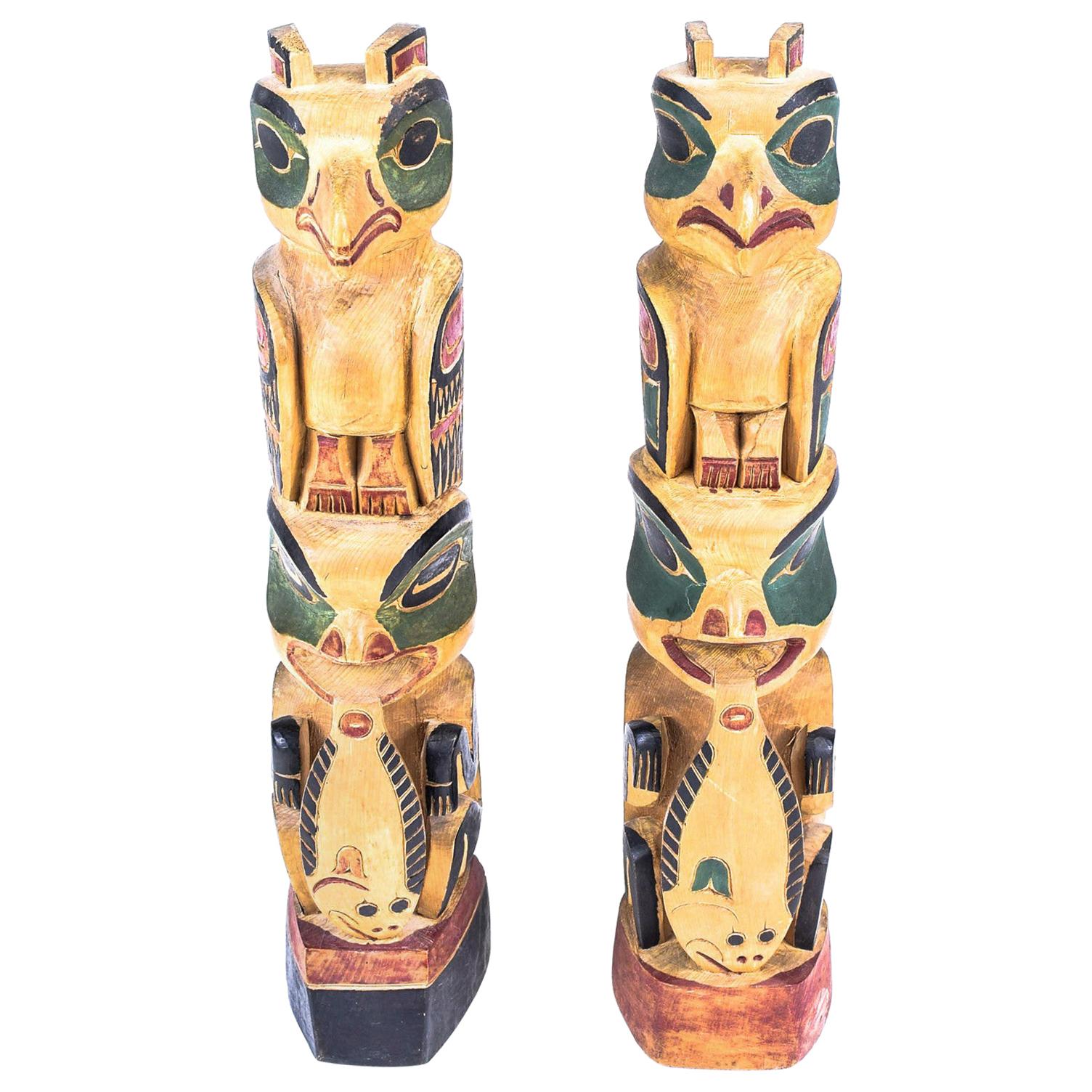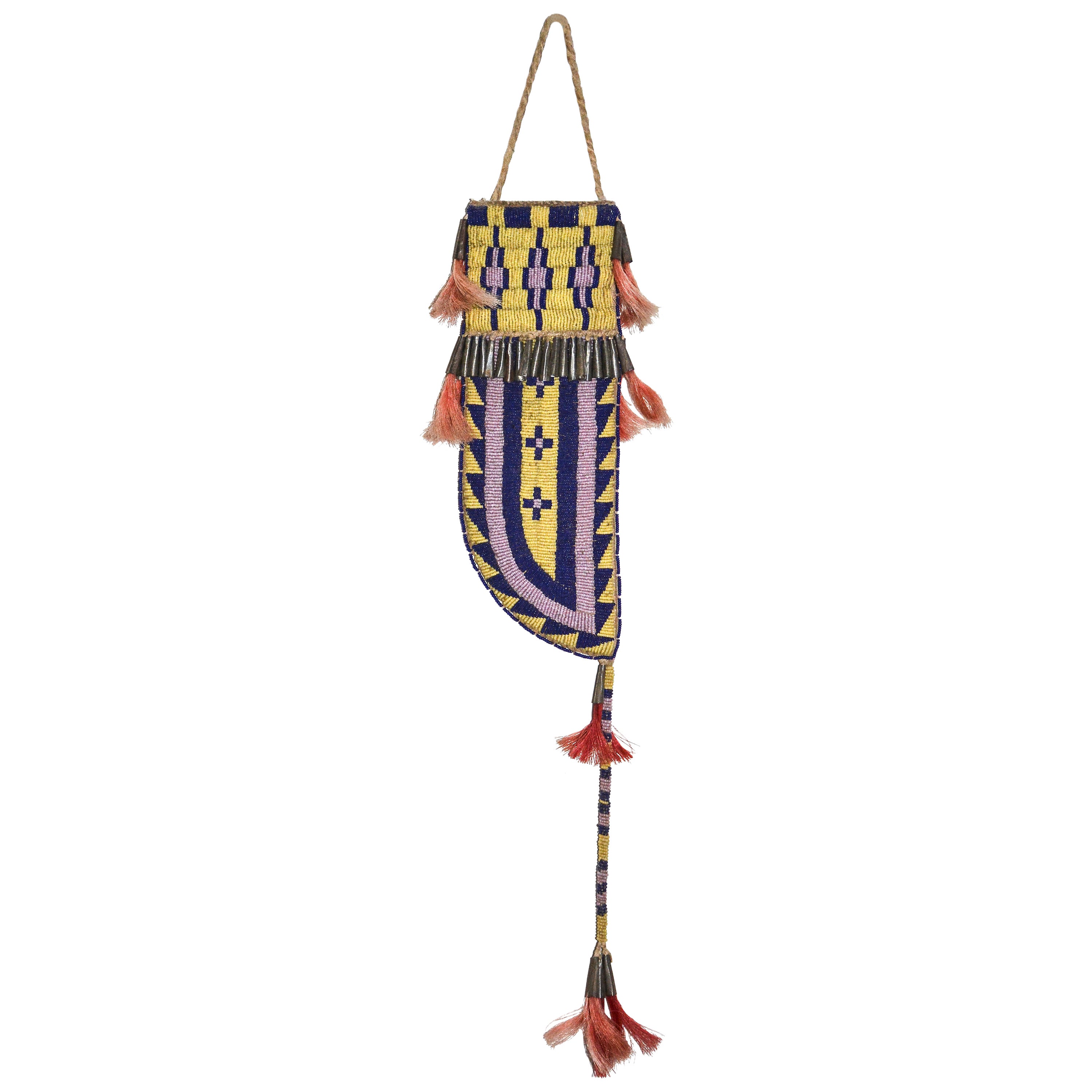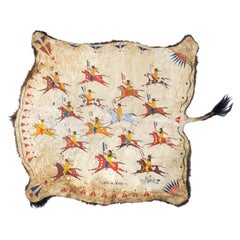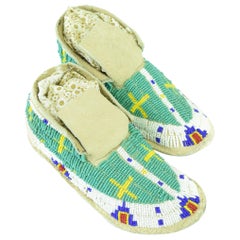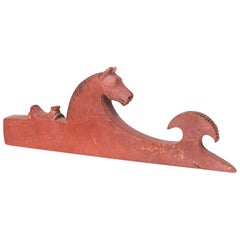
1930s Painted Sioux Steer Skull
View Similar Items
1 of 7
1930s Painted Sioux Steer Skull
About the Item
- Dimensions:Height: 21 in (53.34 cm)Width: 19.75 in (50.17 cm)Depth: 17.25 in (43.82 cm)
- Style:Native American (In the Style Of)
- Materials and Techniques:
- Place of Origin:
- Period:
- Date of Manufacture:circa 1930
- Condition:Wear consistent with age and use.
- Seller Location:Seattle, WA
- Reference Number:1stDibs: LU165325060133
You May Also Like
- Lakota Sioux Painted Buffalo Hide by Merle LockeLocated in Coeur d'Alene, IDLakota Sioux warrior painting on buffalo hide by Merle Locke. Paint on contemporary buffalo hide. Painting of 16 warriors riding on horseback, each carrying feathered coup sticks, surrounded by geometric motifs. Captioned "Lakota On Victory" and signed by the artist at lower right corner. Merle Locke is a member of the Oglala Lakota tribe, having grown up in the Porcupine district of the Pine Ridge Indian Reservation. He is known for his ledger art paintings, evoking the style's origins amongst the Plains tribes in the 1860s. By this time, buffalo had become increasingly scarce, and the older tradition of Plains hide painting...Category
Antique Late 19th Century American Native American Native American Objects
MaterialsOther
- Sioux Child's MoccasinsLocated in Coeur d'Alene, IDSioux child's moccasins. 5 1/2" brain tanned elk. Classic Sioux buffalo hoof design with yellow crosses with red faceted beads and commercial tanned elk hide. Period: circa 1940. Or...Category
Vintage 1940s American Native American Native American Objects
MaterialsOther
- Sioux Catlinite Horse PipeLocated in Coeur d'Alene, IDSioux stylized catlinite horse pipe with saddle. Has been smoked. Neat collector piece. Origin: Sioux Size: 8" L x 3" H x 3/4" W. Family Owned & Operated Cisco’s Gallery deals in ...Category
Antique Late 19th Century American Native American Tobacco Accessories
MaterialsOther
- Native American Parfleche Box, Sioux, 19th Century Painted Hide PlainsBy Sioux Indian ArtLocated in Denver, COAntique Sioux (Native American/Plains Indian) Parfleche in a box form constructed of rawhide and intricately painted in an abstract design with hourglass and geometric motifs with natural pigments and red trade cloth. At the time this was created, the Sioux Indians were nomadic and are associated with vast areas of the Great Plains of the United States including present-day North and South Dakota, Minnesota, Nebraska and Montana. Authenticity is guaranteed. Box is in very good condition - please contact us for a detailed condition report. Parfleches are rawhide containers which were fundamental to the Plains way of life. Functioning essentially as protective travelling suitcases, they enabled the nomadic tribes to effectively pursue buffalo herds and migrate between seasonal camps. So critical were they to a nomadic existence that over 40 tribes are known to have historically produced parfleches. Collectively, these tribes inhabited an area which encompassed the entirety of the Plains, as well as the parts of the Southwest, the Transmontane and Western Plateau regions. Parfleches were, out of necessity, robust and versatile objects. They were designed to carry and protect within them anything from medicinal bundles to seasonal clothing or food. In fact, it was because of the containers’ robusticity and variety that parfleches earned their name in the Anglo world. Derived from parer (to parry or turn aside) and fleche (arrow), the word parfleche was coined by 17th century French Canadian voyageurs and used to describe indigenous objects made from rawhide. Despite their common utilitarian function, parfleches served as one of the major mediums through which Plains Indian tribes could develop their long-standing tradition of painting. In fact, it is in large part due to the parfleche that tribal style emerged. Even though parfleche painting developed simultaneously with beading and weaving, painting as an artistic tradition held particular importance in tribal culture. Believed to have evolved from tattooing, it had always been used as a conduit through which tribal and individual identity could be expressed. As such, many tribeswomen were deeply committed, some even religiously, to decorating their parfleche either with incised or painted motifs that were significant to them and/or the tribe. For some tribes, such as the Cheyenne, the decorative processes which surrounded parfleche production were sacred. For others, it seems that their parfleche designs shared an interesting artistic dialogue with their beadwork, indicating a more casual exchange of design motifs. This particular relationship can be seen in Crow parfleche...Category
Antique Late 19th Century American Native American Native American Objects
MaterialsHide
- Native Sioux Quilled Council PipeLocated in Coeur d'Alene, ID19th Century Native American Sioux quilled and file-burnt stem with highly polished T bowl. Period: 19th century Origin: Sioux Size: 8" x 4 1/2", 36" ...Category
Antique 1870s Native American Tobacco Accessories
MaterialsOther
- Native American Sioux Catlinite T PipeBy Sioux Indian ArtLocated in Coeur d'Alene, IDSioux catlinite T pipe with fluted base and top. Has been smoked, with original stem. Collected by Charles Graves, Indian agent in 1928, South Dakota. Authentic. Period: First quart...Category
Early 20th Century American Native American Tobacco Accessories
MaterialsOther
